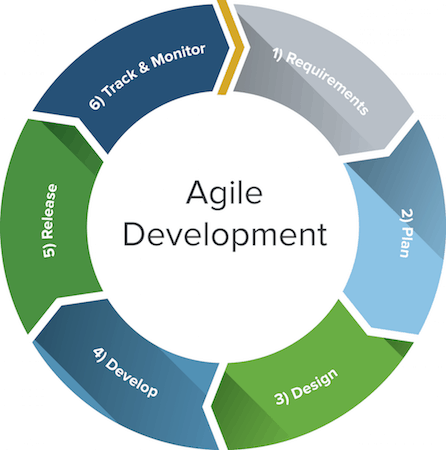The Agile Development Cycle

Here are the phases in the Agile development cycle. It’s important to note that these phases shouldn’t happen in succession; they are flexible and always evolving. Many of these phases happen in parallel.
- Planning: Once an idea is deemed viable and feasible, the project team comes together and works to identify features. The goal of this phase is to break down the idea into smaller pieces of work (the features) then to prioritize each feature and assign it to an iteration.
- Requirements analysis: This phase involves many meetings with managers, stakeholders, and users to identify business requirements. The team needs to gather information like who will use the product and how they will use it. These requirements must be quantifiable, relevant, and detailed.
- Design: The system and software design is prepared from the requirements identified in the previous phase. The team needs to think about what the product or solution will look like. The test team also comes up with a test strategy or plan to proceed.
- Implementation, coding or development: This phase is all about creating and testing features, and scheduling iterations for deployment (following the iterative and incremental development approach [IID]). The development phase starts with iteration 0, because there are no features being delivered. This iteration lays down the foundation for development, with tasks like finalizing contracts, preparing the environments, and funding.
- Testing: Once the code has been developed, it is tested against the requirements to make sure the product is actually solving customer needs and matching user stories. During this phase, unit testing, integration testing, system testing, and acceptance testing are done.
- Deployment: After testing, the product is delivered to customers for them to use. However, deployment isn’t the end of the project. Once customers start using the product, they may run into new problems that the project team will need to address.